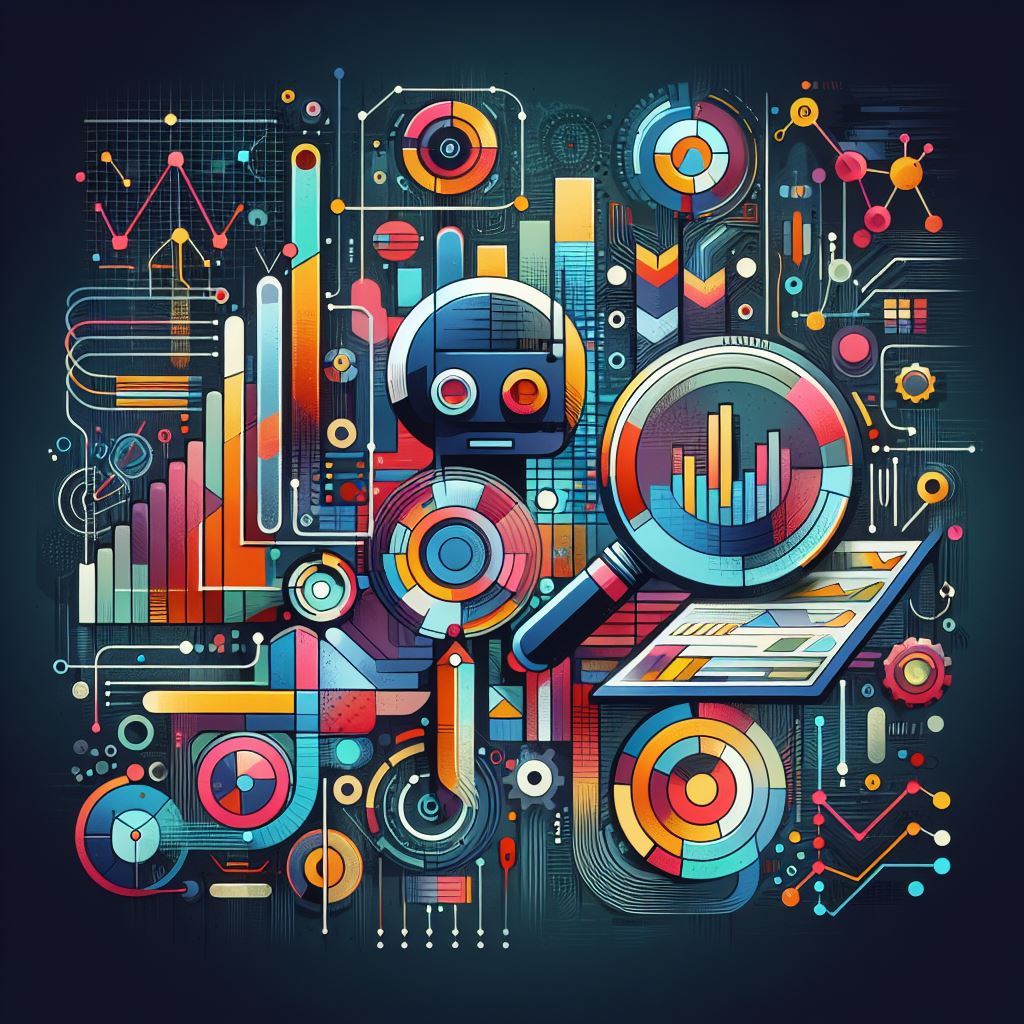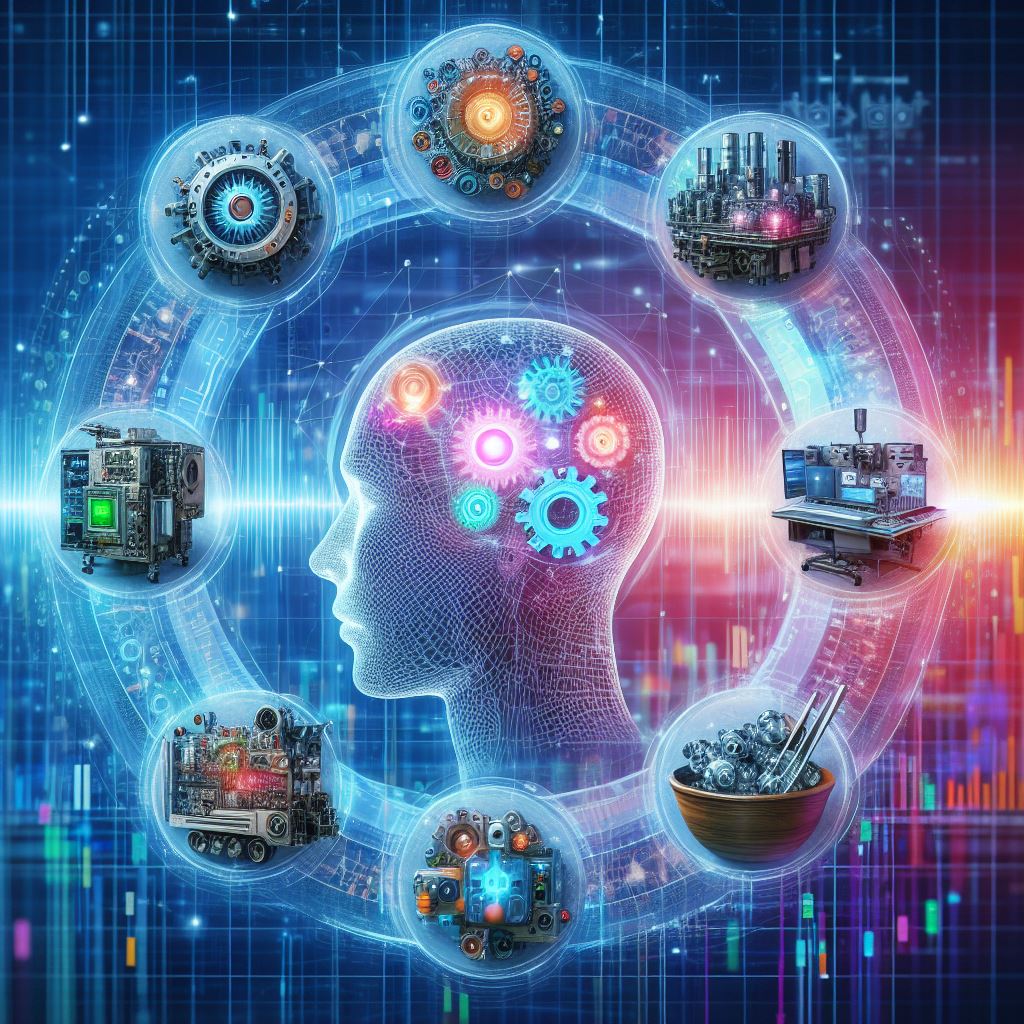Machine Learning (ML) has undergone landmark development over the past decade by becoming a vital component of Artificial Intelligence (AI). While ML and AI are closely related and often used interchangeably, they are not synonymous. Machine learning is a subfield of AI that aims at enabling machines to learn from data and make predictions or decisions without explicit programming. On the contrary, AI embraces a broader spectrum of technologies and mechanisms used to create systems capable of performing complex tasks in ways that may or may not imitate human problem-solving.
The landscape of machine learning is growing rapidly. As per Fortune Business Insight, the market size is expected to rise from USD 21.17 billion in 2022 to USD 209.91 billion by 2029 at a CAGR of 38.8%. Considering this, let us explore the machine learning algorithms, the life cycle of machine learning models, how to build data products with ML models, their challenges and finally the trends for where it is going ahead.
Understanding ML algorithms

Machine learning algorithms are the techniques and computational methods that allow computers to learn and also make decisions/predictions without the need for computer programming.
The ML algorithms help computer systems recognize patterns from data, extract insights from them, and make predictions. Such algorithms are applied across domains like healthcare, marketing, finance, auto-industry, etc. There are various ML algorithms, and selecting the right algorithm will depend on the specific problem, the type of data available, and the desired outcome. Here are some typical categories of ML.
- Supervised Learning: In this case, the learning happens using input data paired with known target labels. This approach is called labeling, and the method is known as supervised learning. The algorithms learn to recognize patterns/relationships in the data and make classifications or predictions when confronting new unlabelled data. Examples: Linear regression, neural networks, decision trees, and more.
- Unsupervised Learning: As opposed to supervised learning, here the algorithm learns to discover the inherent patterns, structures or groupings within the data.
Examples:
-
- Clustering algorithms (e.g., K-means, hierarchical clustering)
- Dimensionality reduction techniques (e.g., Principal Component Analysis – PCA)
- Semi-Supervised Learning: True to its name this learning combines the elements of both supervised and unsupervised learning by leveraging a small set of labeled data along with a larger set of unlabeled data to discover patterns or make predictions.
- Reinforcement Learning (RL): This approach focuses on training an “agent” (refers to the entity or software component) to interact with an environment and learn to take actions to maximize a cumulative reward to achieve a specific goal. It is often used in applications like game-playing, robotics, and autonomous systems.
- Deep Learning: Focuses on neural networks with multiple layers or deep neural networks. It is particularly used for image/speech recognition, natural language processing, and generative tasks.
Examples:
-
- Convolutional Neural Networks (CNNs) for image analysis.
- Recurrent Neural Networks (RNNs) for sequence data.
- Natural Language Processing (NLP): Designed especially for processing and understanding human language, this includes techniques for text classification, sentiment analysis, and machine translation.
Examples: Word2Vec, LSTM (Long Short-Term Memory), and Transformer-based models like BERT and GPT.
The Life Cycle of Machine Learning Models

The common notion of machine learning projects is that it involves data processing, model training, and model deployment. In reality it stretches much beyond. Focusing primarily on the process of developing, deploying, and maintaining machine learning models, it covers the entire lifecycle of a machine learning model from inception to retirement.
Here are some key components of the machine learning model lifecycle:
- Planning
The Key Activities:
- Problem scoping and goal setting
- Resource allocation, including data and team members
- Project timeline and milestone planning
- Stakeholder communication and expectation management
- Data Collection, Preparation
The Key Activities:
- Data collection from various sources
- Data cleaning to handle missing values and preparing data for machine learning
- Feature engineering to create new features or transform existing ones
- Data transformation and encoding for machine learning compatibility
- Model Engineering
The Key Activities:
- Model selection based on the problem type (classification, regression, etc.).
- Feature selection and engineering for model input.
- Hyperparameter tuning to optimize model performance.
- Model training on the prepared data.
- Model Evaluation
The Key Activities:
- Model testing on unseen data (validation or test datasets)
- Evaluation metric selection (e.g., accuracy, precision, recall)
- Fine-tuning based on evaluation results
- Model Deployment
The Key Activities:
- Deploying the model to the target environment
- Setting up APIs / endpoints for model access
- Ensuring real-time scalability and reliability
- Monitoring and Maintenance
The Key Activities:
- Real-time monitoring for model degradation/ drift
- Periodic model retraining with new data
- Version control to track changes and improvements
- Addressing issues and ensuring model reliability
Having covered the life cycle of machine learning models, let us now explore building data products with ML models, which typically involves integrating these models into larger software systems/products to provide value to the end users.
Building Data Products with ML Models
Before delving into building data products, here is a quick understanding of:
What is a Data Product?
It is a software application or system that leverages raw data (often in real-time), processes it, and turns it into valuable, actionable insights, services, or functionality for users.
Applications of Data Products?
Data products can be found in domains like:
- E-commerce: Suggesting products you might like based on your browsing and purchase history.
- Healthcare: Wearable devices that monitor your health, provide insights like heart rate, steps taken, or sleep quality.
- Finance: Apps that track your expenses, categorize expenses, and provide budgeting advice.
- Transportation: GPS navigation apps that use traffic data to suggest the fastest route.
Building data products with ML models requires the integration of ML algorithms and models into specific software applications or systems to provide the required functionality to users. The process includes:
Building Data Products- the steps
- Identify Use Cases
- Start by identifying the specific tasks that derive from machine learning. These use cases should align with your business or project goals.
- Consider areas where predictions, recommendations, or automated decision-making can add value. For example, in your e-commerce business, you might want to build a recommendation system to suggest products to users.
- Data Collection and Preparation
- Gather relevant data; it may come from various sources, such as databases, APIs, sensors, or user-generated content.
- Clean and pre-process the data to ensure it’s in a format suitable for training machine learning models. It may involve handling missing values, encoding categorical variables, and scaling numerical features.
- Select and Train ML Models
- Select the right machine learning algorithms or models for your use case depending on the nature of your data and the specific problem you’re trying to solve (e.g., classification, regression, clustering).
- Split your data into training and testing sets to evaluate model performance. Train the selected models on the training data, and fine-tune the hyperparameters as needed.
- Model Evaluation
- Choose appropriate evaluation metrics (for example, accuracy, precision, recall, F1-score, or mean squared error). Assess the performance of the trained models against them.
- Use techniques like cross-validation to ensure the model’s generalizability.
- Integrate with Software/Application
- Integrate the trained ML models into your software application or data product. Typically it involves using APIs or libraries provided by ML frameworks (e.g., TensorFlow, scikit-learn) to incorporate the models.
- Ensure that your application can send data to the ML models for prediction and receive predictions back in a seamless and efficient manner.
- User Interface (UI) Design
- Design a user-friendly interface for your data product if applicable. Consider how users will interact with the ML-powered features or insights.
- Create visualizations or reports to present the model’s results in an understandable and actionable format.
- Scalability and Performance
- Optimize your application for scalability (especially if big data is involved).
- Monitor the performance of your data product and the ML models, ensuring that they meet service level agreements (SLAs).
- Establishing Feedback Loops
- Implement mechanisms to continuously collect user feedback and behavior data to improve your ML models and the user experience.
- Use feedback to retrain models periodically to keep them up-to-date and accurate.
- Deployment and Maintenance
- Deploy your data product to a production environment where it can serve real users. Ensure that it is reliable, secure, and available 24/7.
- Establish a maintenance plan to address issues, update models, and adapt to changing data patterns and user needs.
- Testing and Quality Assurance
- Perform thorough testing to identify and fix any issues or bugs in your application and ML models.
- Consider automated testing frameworks and practices to streamline the testing process.
- Documentation and Training
- Document your data product, including the models used, APIs, and data sources, for future reference and troubleshooting.
- Provide training and support for users and developers interacting with the data product.
- Compliance and Regulation
- Ensure that your data product complies with relevant data privacy and regulatory requirements, such as GDPR or HIPAA, depending on your domain.
Building data products with ML models is an iterative process. Continuous improvement and adaptation are key to delivering a valuable and reliable solution to users.
Pitfalls in ML Model Deployment

Deploying machine learning (ML) models into production environments comes with several challenges. Mainly because the transition happens from a controlled development environment to real-world use. Some of the challenges (among many others) are:
- Data Shift: Real-world data can change over time, and the distribution of data in production may differ from what the model was trained on.
- Constant monitoring, and maintenance: ML models are not static. With the constant upsurge of data evolution, the model’s performance changes. It may need updates, retraining, or fine-tuning to remain effective.
- Scalability: In real-life models often need to handle a much larger volume of data than used during development and testing.
- Security: Deployed models can be vulnerable to attacks. For example, attempt to manipulate the input data to trick the model into making incorrect predictions.
- Bias and Fairness: ML models can inherit biases in the training data, leading to unfair or discriminatory outcomes in production.
- Latency: Real-time applications demand low-latency predictions. Therefore, if your model is too slow to make predictions, it might not be suitable for certain use cases.
Future Trends in ML and Data Product Development

Cloud Deployment: The data ecosystems are fast moving from self-contained software or blended deployments to the cloud. By 2024, 50% of new cloud-based deployments will rely on an integrated cloud data ecosystem instead of manually integrated point solutions.
Edge AI: Gartner predicts a significant shift in how data analysis by deep neural networks happens. Over 55% of the data analysis process will shift to the data capture source in edge systems. In other words, a significant portion of AI-driven data analysis will happen right where data is collected on devices or systems at the edge of a network, rather than being sent to and processed in remote cloud environments.
Responsible AI: Collaborating with vendors prioritizing responsible AI practices will significantly increase.
Data-centric AI: By 2024, 60% of the data used for AI will be synthetic as against a mere 1% of synthetic data used in 2021, helping in the simulation of real-world scenarios, anticipating future situations, and reducing the risks associated with AI projects.
Increased AI Investment: The 2026 end will see more than $10 billion in investments in AI start-ups that rely on foundation models.
Conclusion
As the ML journey unfolds, it is clear that our understanding and application of AI will continue to evolve, opening doors to endless possibilities and shaping the way we interact with data and technology. As we look into the future, ML and data product development will take a paradigm shift with cloud deployment revolutionizing data ecosystems with responsible and data-centric AI gaining popularity. All these will see increased investments in AI start-ups propelling innovative solutions based on foundation models.



